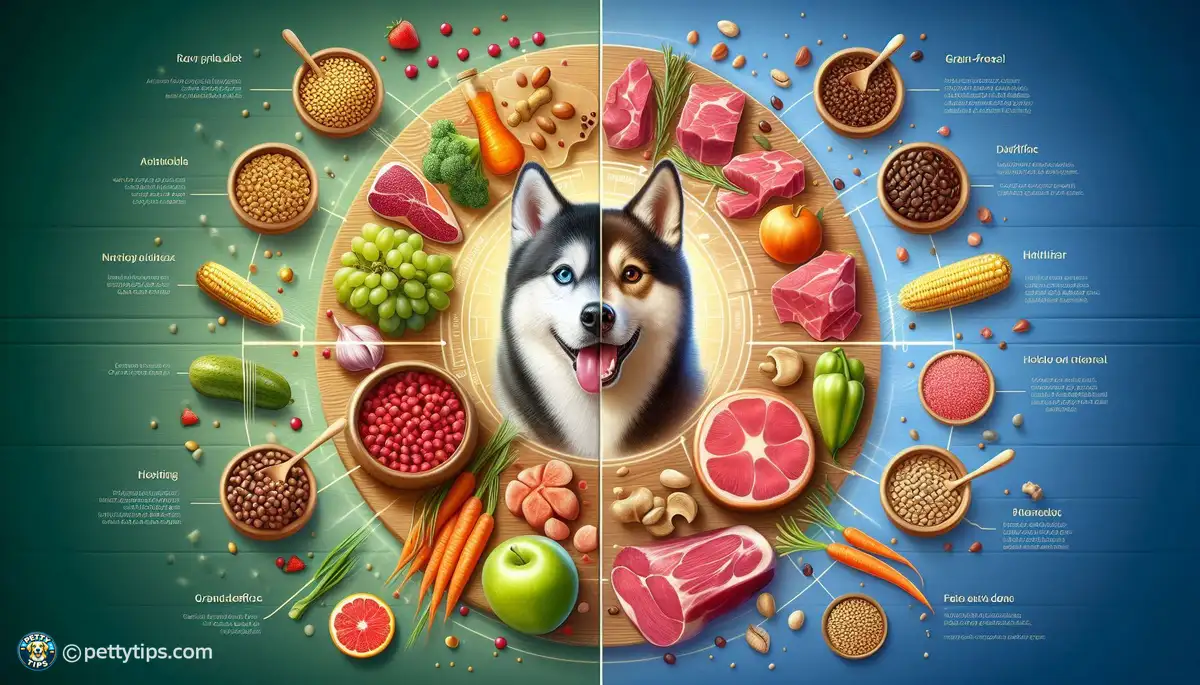
Incorporating Superfoods into Your Pets Organic Diet
Jeffrey Oxendine - Oct 20, 2024 - 5 min read


In recent years, grain-free diets have surged in popularity among pet owners. The primary rationale behind this trend is the belief that grains are unnatural for carnivorous animals like dogs and cats. Advocates of grain-free diets argue that eliminating grains can address various health issues, including allergies, skin conditions, and digestive problems. Consequently, pet food manufacturers have responded to this demand by offering a plethora of grain-free options in the market.
While grain-free diets have gained traction, they also face scrutiny from veterinarians and nutrition experts. One of the main concerns revolves around the potential risk of dilated cardiomyopathy (DCM), a serious heart condition, particularly in dogs fed certain grain-free formulations. Research suggests that some grain-free diets may lack essential nutrients or contain ingredients that interfere with taurine absorption, a critical amino acid for heart health in pets. As a result, the FDA has issued warnings and ongoing investigations into the possible link between grain-free diets and DCM.
When considering a grain-free diet for your pet, it's essential to weigh the benefits and risks carefully. While some animals may thrive on grain-free formulations, others may not. Consulting with a veterinarian can help determine whether a grain-free diet is suitable for your pet's specific needs. Additionally, opting for reputable brands with high-quality ingredients and nutritional balance can mitigate potential health concerns associated with grain-free diets.
raw diets, also known as BARF (Biologically Appropriate raw food) or prey model diets, aim to mimic the natural diet of wild carnivores. These diets typically consist of raw meat, bones, organs, and occasionally fruits and vegetables. Advocates of raw feeding argue that it provides numerous benefits, including improved dental health, shinier coats, and enhanced energy levels. Additionally, proponents claim that raw diets are more biologically appropriate for dogs and cats, reflecting their ancestral eating patterns.
Despite the potential benefits, raw diets pose certain risks, primarily related to food safety and nutritional adequacy. Raw meat can harbor harmful bacteria such as Salmonella, E. coli, and Listeria, posing health risks to both pets and their owners. Furthermore, formulating a nutritionally balanced raw diet requires careful planning to ensure that pets receive adequate nutrients, vitamins, and minerals. Without proper supplementation, raw diets may lead to nutritional deficiencies or imbalances, potentially impacting the long-term health of pets.
If you're considering transitioning your pet to a raw diet, it's crucial to take appropriate precautions to minimize health risks. Start by consulting with a veterinarian who is knowledgeable about raw feeding to develop a safe and balanced feeding plan tailored to your pet's individual needs. Additionally, practice strict hygiene measures when handling raw meat, including disinfecting surfaces and washing hands thoroughly. Consider using commercially prepared raw diets that undergo rigorous quality control and testing to ensure safety and nutritional adequacy.
Before deciding between a grain-free or raw diet, assess your pet's health status and specific dietary requirements. Factors such as age, breed, activity level, and any existing medical conditions should influence your choice of diet. For instance, senior pets or those with certain health issues may benefit from a diet tailored to their unique nutritional needs, which may or may not include grains or raw foods.
Consider your lifestyle and schedule when selecting a diet for your pet. Raw feeding, while potentially beneficial, requires careful meal preparation, storage, and handling of raw ingredients, which may not be feasible for all pet owners. On the other hand, grain-free commercial diets offer convenience and ease of feeding, making them suitable for busy households or pet owners with limited time for meal preparation.
Another crucial factor to consider is the cost associated with each diet option. Raw feeding can be more expensive than traditional commercial diets, as it often involves purchasing high-quality meat, supplements, and possibly specialized equipment for meal preparation. On the contrary, grain-free commercial diets vary in price depending on the brand and ingredients but may offer a more budget-friendly alternative for pet owners seeking a premium diet without the hassle of raw feeding.
When in doubt, seek guidance from qualified veterinary professionals who can offer personalized recommendations based on your pet's unique needs and circumstances. Veterinarians can provide valuable insights into the nutritional requirements of dogs and cats, helping you navigate the complexities of choosing the right diet for your furry companion. Additionally, they can monitor your pet's health and progress over time, making adjustments to their diet as needed to ensure optimal well-being.
Regardless of the diet you choose, closely monitor your pet's response and overall health after transitioning to a new diet. Look for signs of improvement, such as increased energy, shiny coat, and healthy weight maintenance. Conversely, be vigilant for any adverse reactions or symptoms, such as digestive upset, skin problems, or changes in behavior, which may indicate that the diet is not suitable for your pet. Keeping a journal or diary can help track your pet's progress and any notable changes observed.
Ultimately, the best diet for your pet is one that meets their nutritional needs, supports their health and well-being, and aligns with your lifestyle and preferences as a pet owner. While grain-free and raw diets offer unique advantages and considerations, there is no one-size-fits-all solution. Stay open-minded and adaptable, willing to adjust your pet's diet as necessary based on their evolving needs and circumstances. By prioritizing your pet's health and happiness, you can make an informed decision that fosters a thriving and fulfilling life for your beloved companion.